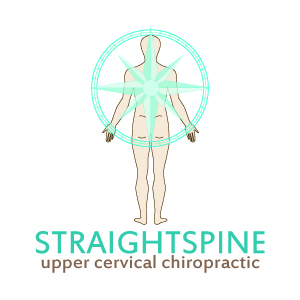The Program of Care
Following the initial upper cervical spinal correction, patients are requested to return to the clinic at specific intervals to monitor spinal alignment and symptomatic response to care. On each visit there will be measurements taken of the alignment of the skull, spine, shoulders, pelvis, and leg lengths. These measurements will be correlated with the measurements that were taken on the first visit. If they demonstrate optimal alignment, the patient will be deemed “in adjustment“ and no further spinal correction will be delivered. If these measurements are not optimal, the patient will be deemed “out of adjustment“ and a subsequent spinal correction will be administered.
Most people who come to our clinics have spines that are accustomed to being in a misaligned state. These spines have a tendency to gravitate, in varying degrees, back to their original misaligned state. It is important to re-correct spinal misalignments as they begin to recur, before the spine returns to its maximally misaligned state. Over time most spines will stabilize and become more accustomed to being straight and balanced. People will tend to “hold” their adjustments for longer periods of time.
Initial or acute phase
Frequency: Weekly or biweekly visits.
Purpose
- To closely monitor the spine until alignment stabilizes.
- To administer spinal corrections when necessary to ensure optimal spinal healing and symptomatic improvement.
Expectations
- Expect symptomatic ups and downs. Depending on your spinal condition, you can expect physical limitations until the spine has repaired and stabilized.
Mistakes
- Being too active too soon. If the spine is in proper alignment, symptomatic improvement is frequently seen. Having a straight and balanced spine will take pressure off damaged and pain-sensitive tissues; however, these tissues are still damaged. If the spine is unnecessarily stressed, symptoms will quickly return.
- Assuming that two treatments should “fix” a problem that has been around for decades. Expectations should be tempered in accordance with each condition. The longer that the spine has been misaligned, the more damaged that it will become, the longer it takes to heal.
Support phase
Frequency: Every two to four weeks.
Purpose
- To establish a pattern. Most people will hold their adjustments for a predictable length of time. Return visits will be based on the pattern that develops. As the spine repairs and stabilizes, the length of time between visits can be safely increased.
- To allow the patient to understand what it feels like to be “in adjustment", and what it feels like to be “out of adjustment”.
Expectations
- Expect symptomatic ups and downs, although painful periods will be less frequent and less intense. Less time will be required to recover from a painful session. If the integrity of spinal alignment is maintained, minor spinal strains will repair themselves quickly.
- Expect to be able to safely increase your activity level.
Mistakes
- To postpone a visit to the clinic when your symptoms suggest you should make a visit. Here's a general rule of thumb: if your spine hurts for a day or two and then gets better, you are probably holding your adjustment. If it hurts for three days or more, you're probably out of adjustment, and should return to the clinic for a reassessment and treatment.
Maintenance phase
Frequency: One-month, two months, three months, or occasionally every six months for life.
Purpose
- To maintain the gains that have been made. In this phase most spines are primarily pain-free and fully functional. However, misalignments have a tendency to recur. You may not notice it if there has not been enough time for tissue damage and subsequent pain to recur. It takes tissue damage to create pain.
- To ensure the attainment of the goal of having a healthy spine for life. Correcting a problem before it becomes symptomatic is the best way to achieve this goal. Seeing your chiropractor only when you are in pain is like seeing your dentist only when your teeth hurt, or seeing your auto mechanic only when your car makes funny noises. Maintenance is important.
Expectations
- Expect to be relatively pain-free on every visit.
- Expect to be able to participate in the daily activities of living.
- Expect a long and healthy life.
Mistakes
- Assuming that you are “fixed” forever.
Conclusion
This program of care is intended to address and rectify the primary cause of spine-related pain and dysfunction. Helping damaged spines heal and preventing healthy spines from deteriorating are the objectives of our therapy. Having a healthy spine is one of the key ingredients of a healthy and active lifestyle.



